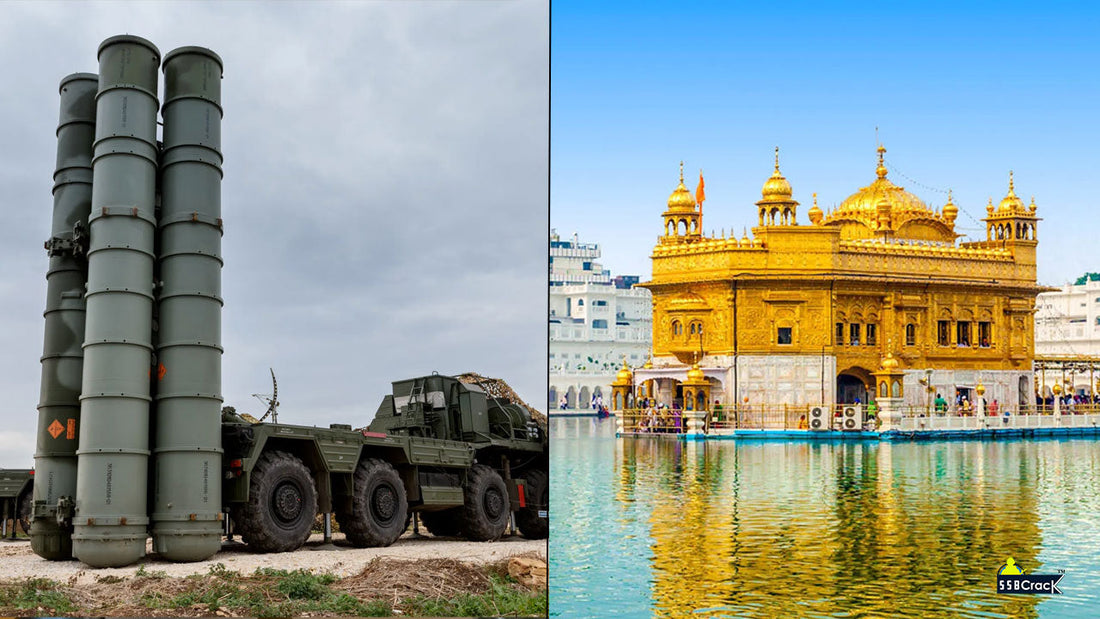S-400 Saves Golden Temple from Pakistani Missile Attack

In a decisive defensive operation, India’s S-400 Triumf air defence system successfully intercepted a Pakistani missile aimed at Amritsar late last night, potentially saving the revered Harmandir Sahib (Golden Temple) from a catastrophic strike. The incident comes amid rapidly escalating tensions between India and Pakistan, following India’s recent counter-terror operations under Operation Sindoor.
Sources in the Indian defence establishment confirmed that a missile was launched by Pakistan in the early hours of May 8, targeting Amritsar — home to the sacred Sikh shrine and symbol of national unity, Harmandir Sahib. Indian intelligence believes the strike was intended to provoke communal unrest and damage one of India's most cherished religious sites.
India’s First Woman Rafale Pilot Squadron Leader Shivangi Singh Sets Her Sights on Space
The S-400 air defence system, deployed in the region as part of India's heightened alert posture post-Operation Sindoor, detected the incoming projectile and neutralized it mid-air. The interception, which occurred well within the S-400’s operational envelope, was witnessed by residents who reported a loud mid-air explosion. No casualties or structural damage were reported in the city.
The Russian-built S-400 Triumf is considered one of the most sophisticated air defence systems globally, capable of neutralizing aerial threats including aircraft, drones, cruise missiles, and ballistic missiles at ranges up to 400 km.
Last night’s interception showcased its combat readiness in a real-world scenario. The missile was tracked by the 92N6E radar, and successfully destroyed using the 48N6DM interceptor, according to defence officials. This is the first publicly confirmed operational use of the S-400 in Indian territory.
India acquired five S-400 units from Russia under a $5.43 billion deal signed in 2018, despite U.S. threats of sanctions under CAATSA. The system has since been strategically deployed to protect sensitive border areas and critical infrastructure.
The missile strike follows India's Operation Sindoor, launched on May 6 in retaliation for the April 22 terror attack in Pahalgam that killed 26 civilians. The operation involved surgical strikes on nine terror camps in Pakistan and Pakistan-occupied Kashmir (PoK), specifically targeting Jaish-e-Mohammed and Lashkar-e-Taiba infrastructure, while avoiding civilian and economic assets.
India described the mission as a “measured, non-escalatory response.” However, last night’s missile strike on Amritsar appears to be Pakistan’s retaliation — one that could have dramatically escalated the conflict had the S-400 not intercepted the threat in time.
This incident reinforces the relevance of India’s strategic defence decisions. The successful use of the S-400 has vindicated India’s acquisition despite earlier international pressure, and strengthens its deterrence capability, not only against Pakistan but also vis-à-vis China.
The United States, which had warned India against the S-400 deal, has remained publicly silent on the matter. However, diplomatic channels remain active, as India briefed U.S. Secretary of State Marco Rubio earlier this week on the objectives and outcomes of Operation Sindoor.
The Defence Ministry is expected to further enhance air defence deployments in Punjab and other vulnerable regions. Meanwhile, India remains on high alert for further provocations, with Indian airspace under close surveillance.
The Harmandir Sahib stands untouched — a symbol of peace and resilience. For millions of Indians, the incident marks not only a military success but a moment of divine protection and national pride.




















2 comments
Pak will try to attack tonight also, we have full trust in our armed forces… Jai hind
Thank you Russia for s400